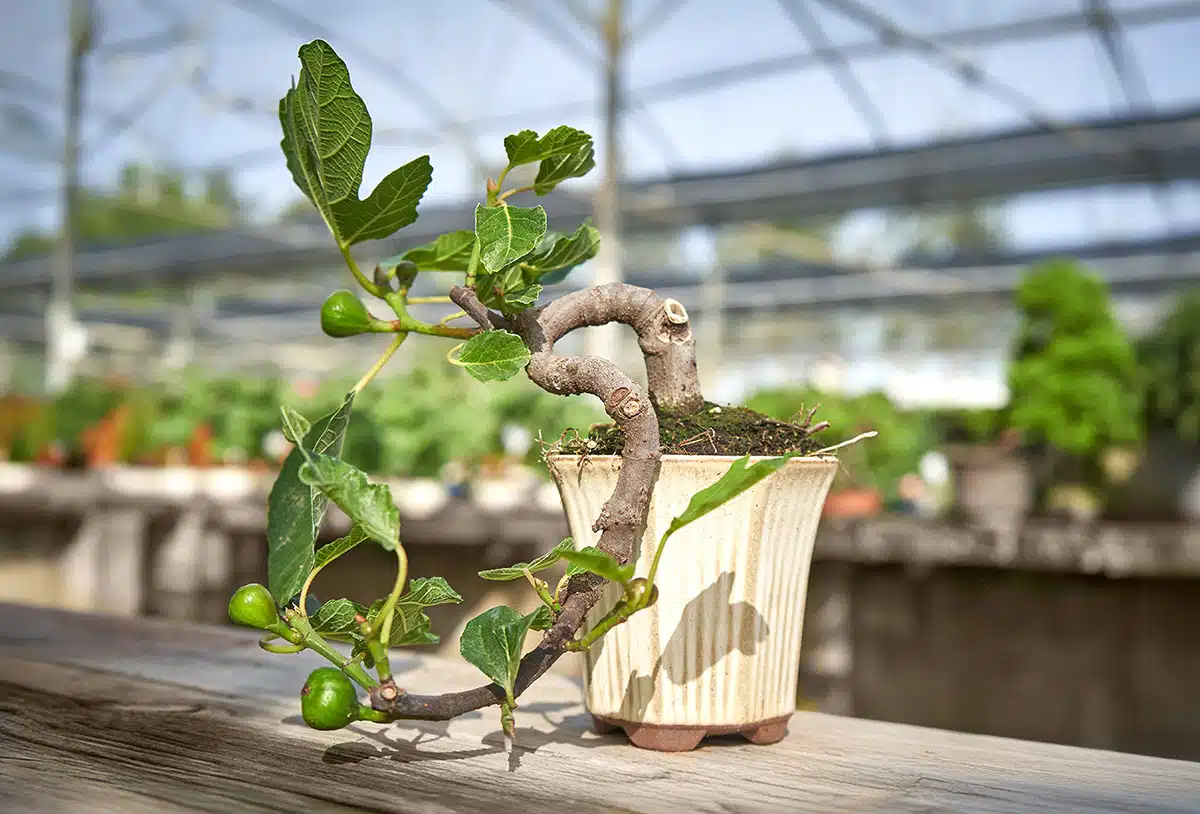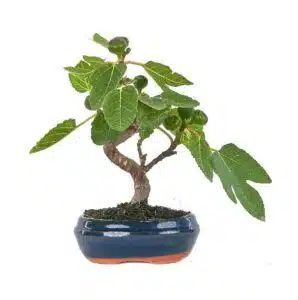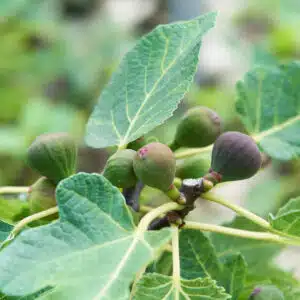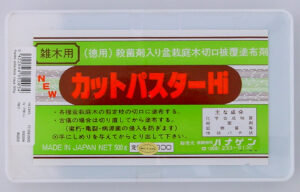Fig tree bonsai, a unique miniature tree

Fig trees, Ficus carica, are a very different bonsai from those that have been traditionally grown. This Mediterranean tree, known for its fruit, the figs, stands out for being very robust and resistant. Its cultivation as a bonsai gives us the reward of all it has to offer as a specie. Find out more about the fig tree bonsai with us!
Did you know that figs are not really fruits but flowers? They are an inverted flower, inside the pod that we know as the fruit there are hundreds of small flowers that ripen inside and turn into the fleshy, sweet fruit that we love so much.
The charm of growing a fig tree bonsai
As we have already mentioned, the first thing that stands out about the fig tree bonsai is its resistance. Originally from Asia, it has always adapted and grown spontaneously in Mediterranean climates, this tree has an incredible ability to adapt to different conditions.
Its gnarled trunk and large leaves give it a striking presence, which may come as a surprise to those who are used to bonsai with small, delicate leaves.
One of the main challenges of this bonsai is managing the size of its leaves which, with the right choice of variety, time and technique you can manage to reduce. This is achieved through sun exposure, pruning and a controlled watering. The key is to balance the light and water needs of the tree. A well-lit and cared fig tree can develop smaller leaves and finer branching, essential elements for any bonsai.
Caring your fig bonsai tree, water and sunshine
The fig tree loves the sun. Placing it in a sunny location will help it to develop vigorously, but it is important to be careful on extremely hot days, when
Too much sun exposure can cause it to fade, especially if it is not watered properly. It is important to keep the soil moist during the summer, but without waterlogging, as the fig tree bonsai is susceptible to root rot.
Do not confuse resistance with forgetting the needs of the tree. Although it can tolerate short periods of drought, it is always best to water when the first 1.5 centimetres deep on the surface of the soil begins to dry out.
Fertilising the fig tree bonsai is essential to ensure a balanced and healthy growth. During spring and summer, when it is in its most active growth stage, it is advisable to use a slow-release organic fertiliser, such as Hiryo Gold Flowers and Fruits, which is low in nitrogen (N), richer in phosphorus (P) and potassium (K). This prevents excessive leaf development and promotes more controlled growth of branches and roots.
Pinching and pruning, patience and strategy
Another challenge when growing a fig tree bonsai is the management of pinching and pruning. Branches tend to grow quickly and if left uncontrolled, this also influences the size of the leaves.
A continuous pinching in times of active growth, to improve compactness, should be combined with strategic pruning and
defoliation. During summer, you can choose to remove larger leaves to stimulate the growth of smaller new shoots, which, over time, will help to maintain a more compact appearance.
Also, as with other bonsai, pruning of thick branches should be done in late winter. Fig trees are slow to heal wounds, so it is best to apply sealing paste to cuts.
TIP: When pruning the branches of the fig tree, they lose sap which can cause skin allergies. When pruning a fig tree bonsai, it is recommended to wear gloves.
The repotting and its importance
As your bonsai grows, the time for repotting is approaching. In general, it is recommended to do this every 2–3 years, always at the end of winter, or at the beginning of spring, before the tree starts its new growth cycle.
When the time comes, take the opportunity to check the roots, prune them and provide it with a suitable bonsai soil that allows good drainage. Using a mixture that includes Akadama or Volcanic gravel and peat will help to keep the humidity under control, the Terrabonsai soil is a good option made up of the above-mentioned mixture.
After repotting, it is essential to give your fig tree bonsai some rest. A location without direct sun will allow it to recover from stress, root properly and adapt to its new pot.
A little piece of the Mediterranean in your home
Growing a Ficus carica bonsai is a rewarding challenge because of its rustic beauty and adaptability. With patience, as with all bonsai, proper pruning techniques and a balance between water and sun, your fig tree bonsai will become a show-piece in your bonsai collection.
You may also be interested in:
About the Author
Mistral Bonsai
In Mistral Bonsai we are a communication team, technicians and masters committed from the first day to disseminating the wonderful art of bonsai. A world that offers many things to share. We believe that a bonsai is a tree with a soul, unique and unrepeatable. Another of our most essential pillars is, how could it be otherwise, our close commitment to the preservation of the environment and nature.
Categories
Bonsai Care & Seasonal Work (36)
Bonsai Pottery (4)
Bonsai Publications (10)
Bonsai Repotting (6)
Bonsai Soil & Fertiliser (5)
Bonsai Species (39)
Bonsai Watering (4)
Mistral Bonsai Corporate (12)
Prebonsai & Shohin Bonsai (3)
Techniques & Bonsai Tools (15)
Uncategorized (1)


